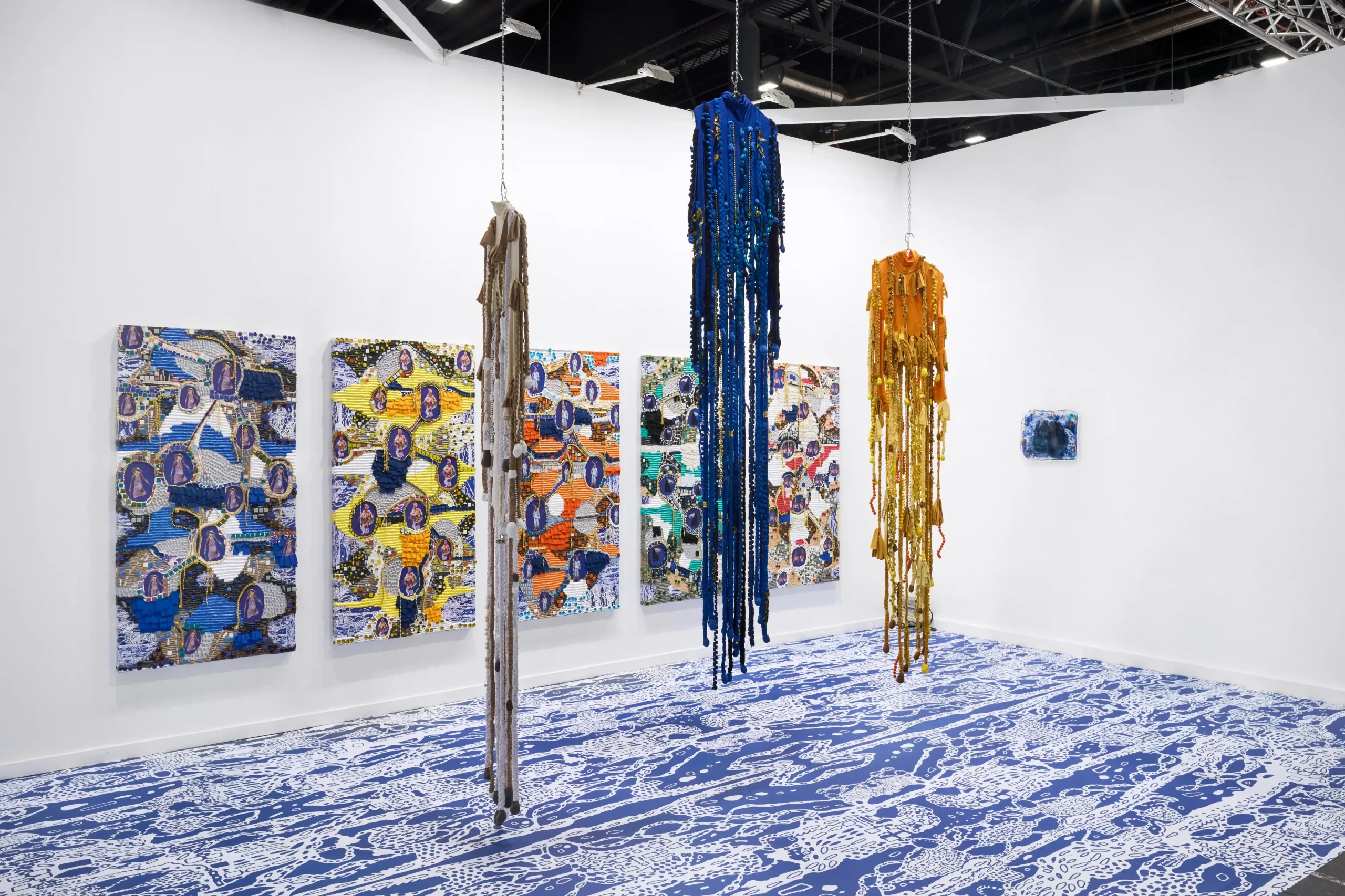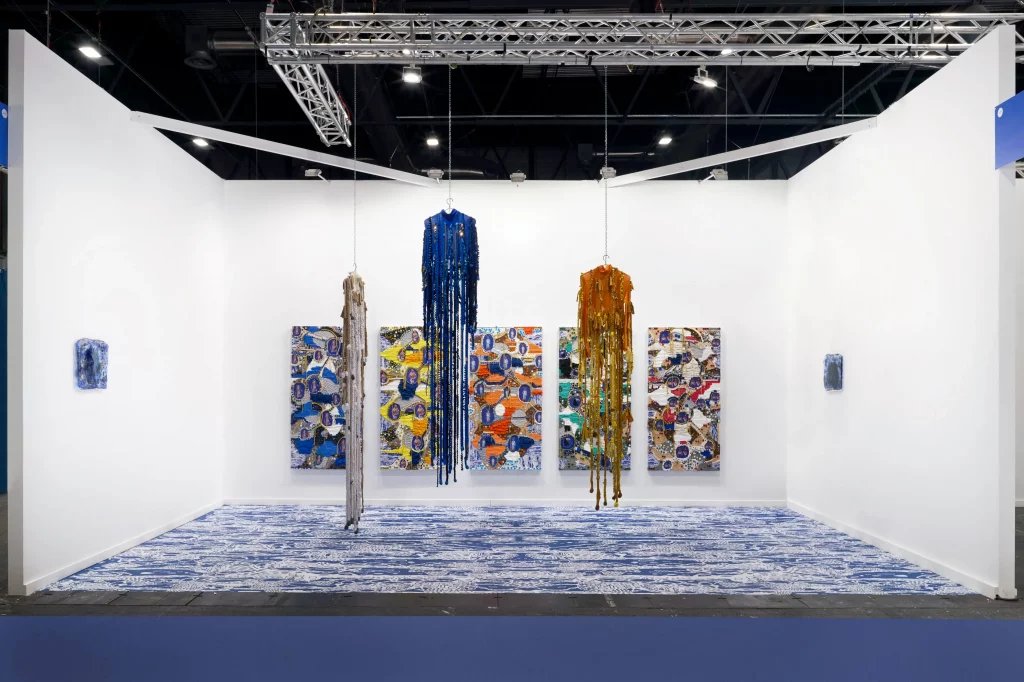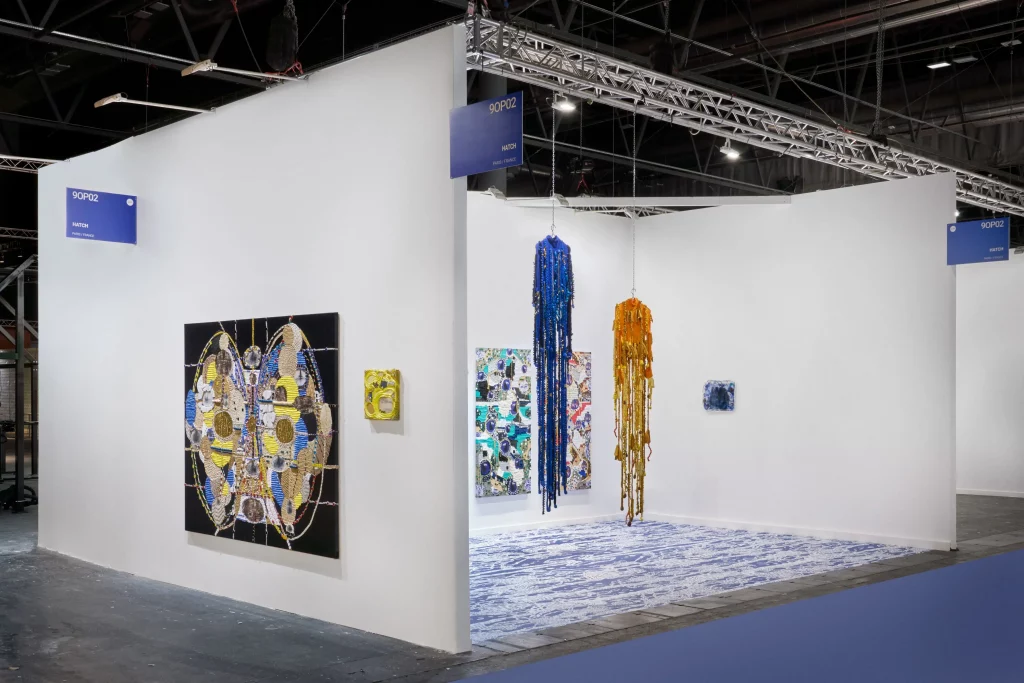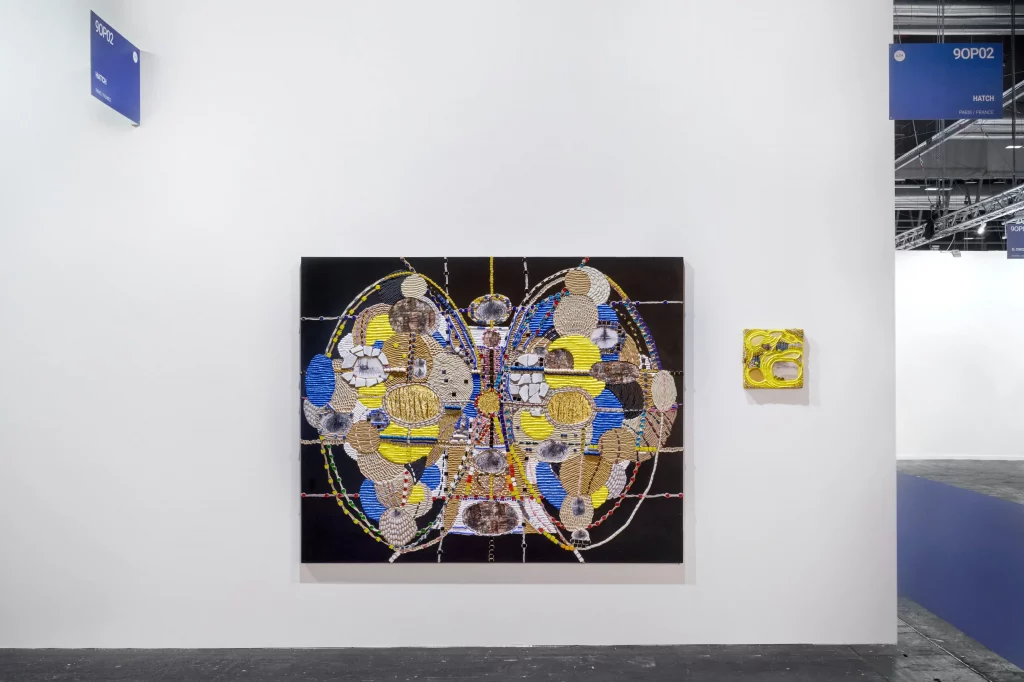
With the Floats
ARCO Madrid with Hatch Gallery,
Paris
2025
At the intersection of her German and Jamaican heritage, Theresa Weber’s practice navigates the complex and fluid terrain of diasporic identities. Her work embodies the “cosmos of unfixed and ever-changing identities,” challenging fixed notions of selfhood through decolonial and feminist frameworks. By exploring translation and hybridization, Weber investigates cultural performances where identities are continuously reshaped through collective rituals, improvisation, and embodied practices. Drawing from Édouard Glissant’s metaphors such as the rhizome and the archipelago, Weber’s art rejects linear narratives of origin, embracing the opacity and plurality inherent in diasporic existence. Her practice confronts the legacies of colonialism that persist in structural hierarchies, addressing the hybrid body as both a site of historical trauma and a vessel of resilience and resistance. This duality—of suffering and defiance—animates her engagement with corporeality, where the body becomes an archive: a living repository of history and an active participant in rewriting that history through performance, ritual, and improvisation. Carnival emerges as a central motif in Weber’s work. Beyond its vibrant aesthetics, Carnival disrupts Western chronological time and reshapes societal norms. In Weber’s interpretation, Carnival is a space of resistance, reinvention, and communal expression—a celebration of hybrid identities and a rejection of fixed hierarchies. The improvisational nature of Carnival echoes in her artistic process, where collaboration, spontaneity, and movement are integral. The mask and labyrinth serve as metaphors for the beauty of self-reinvention, a key concept in her practice. Theresa Weber’s personal experience with Carnival reflects the dynamics of cultural circulation. Initiated by Black Caribbean immigrants, particularly from Trinidad, Notting Hill Carnival in London represents a space where Caribbean traditions are reimagined within an urban London context, showcasing their vibrancy and their ability to generate new collective narratives. For the ARCOmadrid 2025, Weber presents With the Floats, a dynamic network of references—water, land, and body—where materiality and history merge, exploring the body as both a network and a site of transformation. The installation consists of three wearable costumes, five silicone-based panels, and a large-scale floor print. Five panels function as altars, each dedicated to a specific character from the Junkanoo Masquerade—the King and Queen, Cow Head, Horse Head, Belly Woman, and Pitchy Patchy. Junkanoo is a Caribbean carnival tradition, celebrated in Jamaica and other islands on Boxing Day and the day after Christmas. Originating from plantation-era festivities, it served as both a celebration of the harvest and a satirical performance mocking enslavers. Closely linked to West African masquerade traditions, Junkanoo serves as a bridge between ancestral memory and contemporary reinvention. The panels are composed of prints on paper, collaged with acrylic paste, silicone, and implanted costume elements— including beads, nails, clips, face gems, and mosaic stones. Infused with archival imagery and tactile materials, these elements are bound together by layers of acrylic paste, creating richly textured surfaces that echo the symbolic and material complexity of Caribbean masquerades. Each altar-like panel embodies the essence of its character, weaving together personal and collective histories in a fragmented yet interconnected narrative. The three wearable costumes, intricately crafted from culturally loaded materials such as synthetic hair, vibrant fabrics, and silicone. These costumes, conceived as traces of embodied presence, draw from gestures of braiding, knotting, and weaving— practices that resonate within Caribbean and diasporic traditions. The costumes function as both artifacts and tools for performance, blurring the line between static object and dynamic action. The floor print expands Weber’s cartographic approach, integrating fluid, mosaic, and rhizomatic forms. Its deep blue tones connect to the colonial history of the indigo industry, which linked West Africa, the Caribbean, and Europe through forced labor and mass production. The presence of this color within the installation recalls its complex legacy in textiles, ceramics, and trade. Weber’s exploration of culturally resonant materials and body-centric forms interrogates the fluidity of traditions while reimagining resilience and healing through costume, space-making, and the performative. At its core, her practice invites a reconsideration of the political and poetic possibilities of diasporic identities, offering a vision of hybridity, adaptability, and resistance as vibrant and dynamic as the traditions it celebrates.
Text by Margaux Knight
Photos by Choreo
Curation by Margaux Knight


